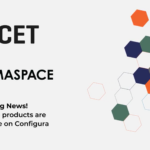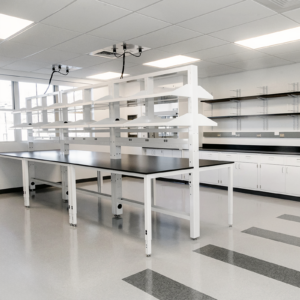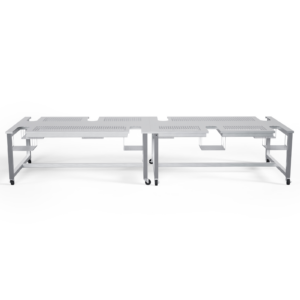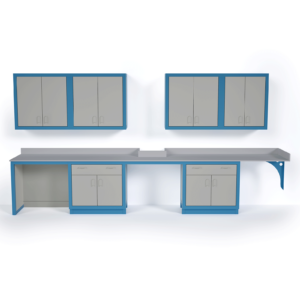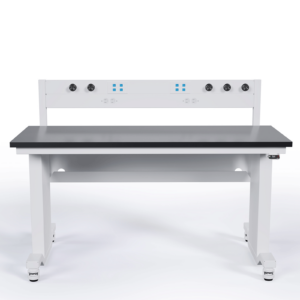If you ask most people to close their eyes and imagine a day in the life of a professional scientist, clinical lab worker, or a science teacher in biology, chemistry, or physics, you’ll probably find they imagine people wearing white lab coats working diligently away in a traditional laboratory setting kitted out with bubbling flasks perched on gas Bunsen burners.
But does that paint a realistic picture of today’s research laboratory environments?
Most lab professionals would say no – today’s reality is quite different.
In the last two decades, more and more laboratory research is taking place outside of traditional wet lab settings, thanks to rapid advances in computer software and big data analysis.

What Lab Managers Need to Know About Managing a Remote Lab Setup
During the height of the coronavirus pandemic lockdown in 2020, many lab managers suddenly found they needed to create new policies and procedures to allow those normally working in so-called “dry labs” to transition to working from home (WFM).
Of course, many of these lab managers were not starting from scratch – as many commercial and academic labs already had long-standing (often informal) policies that allowed employees to work from home one or more days a week.
As you might imagine, many lab workers with long-term experience working from home found the transition to full-time work outside the lab to be a fairly smooth one.
However, just as in the case of office managers, lab managers also found it necessary to provide significant additional support to those workers who had little or no experience establishing a functional home office.
These workers often required coaching to overcome common technology challenges, e.g. connecting to a secure VPN to access remote files; learning best practices for conducting meetings using videoconferencing systems such as Zoom; or using groupware tools, such as Slack, effectively.
Lab managers also had to confront how to develop and maintain a cohesive and productive team, despite the fact they now rarely met face-to-face. They discovered that many of their traditional “people management” practices, such as making daily rounds of the laboratory to find out what each person is working on, didn’t translate well in an online, virtual work environment.
Much to their chagrin, the act of constantly checking in with employees “to find out how they are doing” often came across as an annoying or even aggressive micromanager.
But over these past months of the pandemic, lab managers and HR departments have been able to adapt by creating new policies and procedures to formalize what had once been an informal practice of allowing “dry lab” workers to transition to working from home full time.
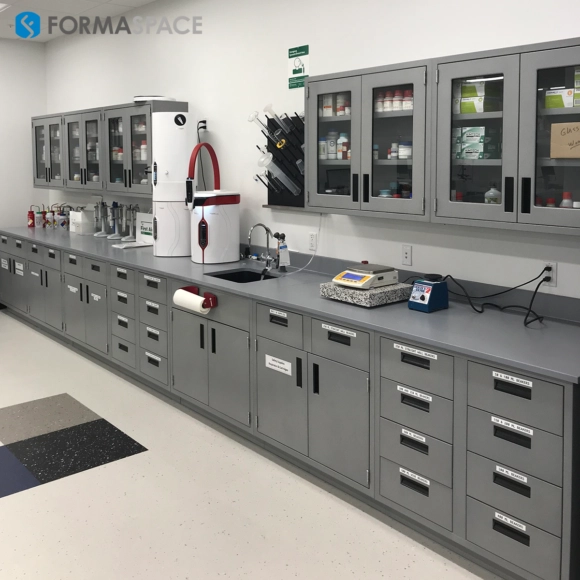
But what about “wet lab” workers who work with samples or those lab researchers who need to operate lab equipment?
How can these workers accomplish some of their tasks while working from home?
Take Inspiration from Remote Labs used in Education Settings
Much of today’s inspiration for creating a fully remote laboratory operation comes from innovations first pioneered in the field of science education.
Long before the arrival of the pandemic, science education professionals around the world had been investigating ways to create “remote control” laboratories – to allow students to conduct experiments, take measurements, or otherwise learn scientific principles using remote sensing and control devices.
One such early adopter of remote lab technology is Professor Yau-Yuen Yeung of the Education University of Hong Kong, whose lab (shown in the above video) pioneered experiments in implementing highly customized controls that would allow students to conduct laboratory experiments remotely.
A more recent example is the Biology Cloud Lab, created at Stanford University by the collaboration of a bioengineering professor, Ingmar Riedel-Kruse, and a professor of education, Paulo Blikstein.
The Biology Cloud Lab uses cell cultures designed to be long-lasting and stable, allowing numerous students to conduct remote experiments on the cultures over a multi-week period. So far, the lab has evaluated the experiences of students at the college-level biophysics class level as well as experiments suitable for middle-schoolers.
“We are doing to biology what Seymour Papert did to computer programming in the 1970s with the Logo language,” Blikstein said. “The Biology Cloud Lab makes previously impossible activities easy and accessible to kids – and maybe also to professional scientists in the future.”

Conducting Remote Lab Equipment Monitoring
What can we learn from these pioneering efforts of “remote labs,” and how can we apply them to commercial and postsecondary academic laboratories?
The first thing is to break down the problem into two broad categories:
- Conducting Remote Lab Equipment Monitoring
- Managing Remote Lab Experiments
Let’s address the first category, lab equipment monitoring, as it’s a far simpler use case.
The reason for this should be clear, given that so much of today’s laboratory equipment is fully automated and does not need hands-on attention.
And increasingly, many of the newest lab test equipment products offer optional remote access, often via smartphone, that allows lab workers to monitor the progress of an experiment and download the data results remotely.
While it’s theoretically possible to conduct many tests remotely, for safety reasons, it is prudent to maintain a well-versed lab tech working on-site who can monitor all of the lab working equipment and take action when something goes wrong, either by resetting the equipment or taking action in response to a dangerous situation, such as overheating equipment starting a fire.
Managing Remote Lab Experiments
The second case, managing lab experiments remotely, is a little bit trickier.
As a general rule of thumb, the more standardized the experiment or test, the potential exists for automation.

Breaking a process down into stages is very useful in this context.
For example, conducting a one-off experiment, such as using a Luminex® Assay machine to identify various bio-markers, would likely require a lab researcher to pipette the 96-well plate containing the individual cell cultures by hand.
However, if this type of assay test were conducted as part of a regular workflow in a clinical testing laboratory, it would make sense for the lab to invest in advanced automation, which might allow for more of the steps to be automated (such as populating the well plate), which could theoretically be set up and managed remotely.
Whether an experimental process or test procedure can be automated and controlled remotely is going to depend on many factors, such as capital budgets to invest in new equipment, an appetite for customizing new automation workflows, and the relative desirability of implementing remote work.
And, as in the case of remote lab monitoring, it’s unlikely that labs will ever be able to conduct experiments without a lab worker on site who can make sure all systems are operating safely and within proper limits.
Workflow Standardization Helps Organize Remote Lab Operations
Despite the barriers to conducting remote lab experiments, the trend is clearly toward more automation.
Each successive new generation of lab equipment is offering greater control and built-in intelligence, as well as remote control options.
So how can laboratory managers get ahead of the curve?
Some are turning to a more formal practice of documenting workflow standardization, adopting a technical reference language (known as Common Workflow Language or CWL) that provides a standard modeling terminology for conducting experiments and integrating computer code from disparate systems.
(If you are familiar with software programming, this is equivalent to documenting software functions/requirements in UML.)
Implementing a serious effort at standardization today could provide many future dividends tomorrow, not only by helping labs become more prepared to adopt remote lab access procedures (as they become available) but to also help improve your lab’s reputation for being able to generate trustworthy, reproducible results when conducting complex experiments or tests.

Which Research Platforms will Support Remote Lab Setups?
Where will things go from here?
One possibility is that a new dominant platform will emerge that will help lab managers implement and manage remote lab workflows.
We touched briefly on some of the groupware app platforms, such as Slack or Zoom, which help remote teams of all types work together.
But the scientific research community has already adopted a number of existing platforms that could grow to incorporate remote lab management as well.
In the case of scientific literature research, we already have several leading examples, such as Zotero or Mendeley (from the science publisher Elsevier), which assist individuals and small teams of researchers to collect, organize, and document the existing scientific literature. These tools are already designed to support cloud computing, making them available to researchers working from home, from the laboratory, or anywhere in between.
More examples of software platforms already in widespread use among the laboratory community are LIMS systems and “smart” electronic notebooks. It’s reasonable to expect that these tools will seek to grow their feature sets and capabilities to encompass the remote laboratory concept – perhaps by adding specific tools and controls for monitoring and conducting remote experiments from home.

DIY Versus Off-the-Shelf Remote Laboratory Tools
Commercial laboratory equipment makers and software integration vendors are also pursuing the idea of creating a master platform system “to rule them all.”
The strategy that these companies, such as HPE and Agilent (the consulting and measurement devices spin-offs of Hewlett Packard, respectively) or Honeywell, are pursuing is a control systems play, in which they would hope to create the “go-to” industry standard for remote controlling devices in your laboratory. From their perspective as integrators of IoT devices, this makes perfect business sense because a modern laboratory equipped to operate remotely is going to need a central platform to integrate and control various devices, measurement sensors, and controls.
But we can’t forget that laboratory personnel are a creative and inventive bunch as well.
So can’t count out home-brewed solutions, such as those created by academic research teams in individual laboratories who favor DIY solutions and non-commercial, open-source software platforms.
One such academic effort, dubbed Telelab, was created as part of a research study by the Institute for Future Intelligence in Natick, Massachusetts. The research underscores the need for remote educational labs to move away from a centralized model (in which a few experts define experiments centrally) in favor of a more open approach that allows educators to create, operate, and share their own remote labs.
After all, it was an altruistic academic approach, conducted World Wide Web Consortium (W3C) that helped develop today’s modern internet protocols – as well as many other powerful open-source software platforms, including LaTeX, Linux, Python, R, or Rust, commonly used in research applications.
So it stands to reason one of the many software projects found today – somewhere on the GitHub repository – may grow up to be the open-source platform of choice for managing remote laboratory functions. (If you want to nominate your favorite candidate, please leave a comment below!)
The Impact of AI and Big Data on Remote Laboratory Operations
One thing that is certain in life – especially for lab managers – is that things are constantly changing, which makes it hard to “future proof” your lab operations.

But clearly, there are some meta trends at work in scientific research that are not in dispute.
Big data analysis and machine learning are trends that appear inescapable for the foreseeable future – with more and more experiments being conducted in virtual software simulation environments – and comparably fewer conducted using live samples extracted in wet lab settings.
What would the future of labs look like if this trend continues?
Tomorrow’s laboratories may rely on a near-universal set of wet lab-derived samples, each one carefully cataloged for future usage – right down to the individual DNA sequences or even individual molecules.
The analogy that comes to mind is the Human Genome Project, which once human DNA was successfully decoded and documented, allowed researchers to leverage the resulting data in ways that could not have been predicted when the work was being undertaken.
Indeed by digitizing everything, we might achieve the idea of a functional remote lab sooner than we realize, as we hasten the transition to fully digital, data-driven experiments.
It will be exciting to find out how accurate this prediction turns out to be.
Are You Ready to Build the Laboratory of the Future? Formaspace Can Help
If you can imagine it, we can build it, here at our factory headquarters in Austin, Texas.
Find out how we can work together to build your next laboratory or upgrade your current facility.
Talk to you Formaspace Design Consultant today.

